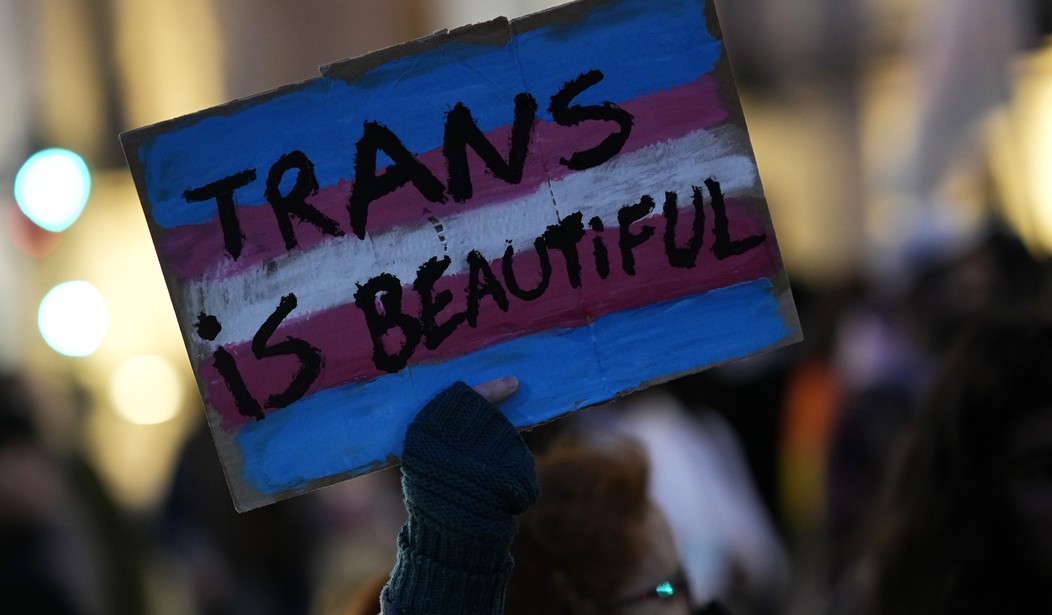In their efforts to influence more young people to embrace transgenderism, progressives have told many lies. However one of their favorite deceptions is pretending that the increase in the percentage of teenagers identifying as transgender has nothing to do with outside forces influencing these decisions.
Prior studies have indicated that while there are several factors contributing to the growth in the number of teenagers suffering from gender dysphoria, social influence is playing a highly significant role. Now, a new report suggests that social contagion is an underlying issue contributing to this.
A new study published in the Archives of Sexual Behaviour suggested that social contagion is a factor in the recent phenomenon of teenagers and young adults identifying as transgender. The study, conducted by Drs. Michael J. Bailey and Suzanna Diaz, examined a survey of 1655 parent reports to investigate the Rapid Onset Gender Dysphoria (ROGD) hypothesis, first proposed by Dr. Lisa Littman in 2018. While Littman was accused of transphobia and her study was deemed invalid by some, evidence to support her hypothesis has only grown in recent years, and this latest study indicates that, at least for some, ROGD is a reality.
Littman’s study revealed a 4,400% increase in teenage girls seeking gender treatment over the prior decade. “In Canada, Sweden, Finland, and the UK, clinicians and gender therapists began reporting a sudden and dramatic shift in the demographics of those presenting with gender dysphoria—from predominately preschool-aged boys to predominately adolescent girls,” according to author Abigail Shrier in her book “Irreversible Damage: The Transgender Craze Seducing Our Daughters.”
The study consisted of parent reports from an online survey on the website Parents of ROGD Kids and is much larger than any previous attempt to study this cohort. Notable findings in line with past studies show that adolescent-onset gender dysphoria disproportionately affects females, with the sample showing 75% females versus 25% males. The study also found that young people with mental health issues were more likely to have socially or medically transitioned, raising concerns that they may lack the judgment necessary to make such important, and potentially permanent, decisions.
The study revealed that 55.4% of parents responded “yes” when asked if their child had friends who “came out as transgender around the same time,” and this response was significantly higher for natal females (60.9%) than natal males (38.7%).
The study found that having transgender friends significantly increased the likelihood of social transition, particularly for females. Among those who answered “yes” to having transgender friends, the mean number of friends was 2.4, and 73.3 percent of females with contemporaneous transgender friends had taken steps toward social transition, compared to 54 percent without such friends.
Additionally, parents estimated that before developing gender dysphoria, their children were spending an average of 4.5 hours per day on the internet and social media. Many parents reported that their children spent hours immersed in transgender culture online before announcing a transgender identity. This finding is consistent with reports from de-transitioners who first encountered the concept of gender identity online.
The susceptibility of adolescents to social contagions, combined with the increasing amount of time spent on the internet and social media, highlights the need for caution and further research in the area of transgender identification. Adolescent girls and young women have historically been more vulnerable to social contagions such as anorexia, bulimia, and cutting, as well as the contagion of multiple personality disorders and hysteria.
Researchers also found that 72.6% of parents believed stressful events in their children’s lives might have contributed to the gender dysphoria they experienced.
“Inspection of specific responses suggested that these stressful events varied considerably in both their nature and severity. For example, several parents noted that the family had moved recently. Others mentioned the youth’s romantic difficulties,” the report explained.
For those being honest about the matter, none of this is very surprising. Indeed the numbers we are seeing make it impossible to argue, as progressives do, that this phenomenon is the result of more teenagers feeling comfortable with coming out as trans. This is not an organic trend – it is being influenced, by and large, by western society.
But this is part of the agenda.
Progressives are working so hard to foist their transgender ideology on children because they want to make it more accepted, celebrated, and embraced in the culture. Moreover, the practice of transing children has become a big business nowadays. No wonder they are pushing this so hard – there is a lot of money to be made.













